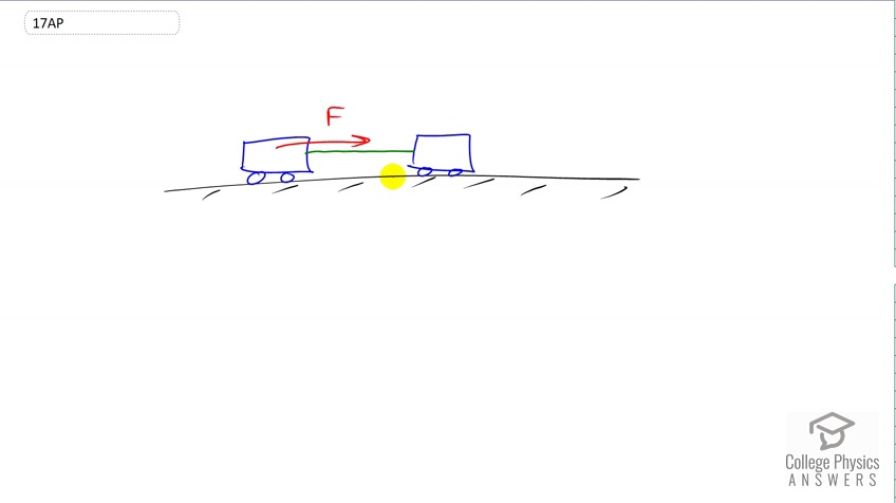Question
A child has two red wagons, with the rear one tied to the front by a (non-stretching) rope. If the child pushes on the rear wagon, what happens to the kinetic energy of each of the wagons, and the two-wagon system?
Final Answer
See the solution video for a description of the kinetic energy changes.
Solution video
OpenStax College Physics for AP® Courses, Chapter 7, Problem 17 (Test Prep for AP® Courses)

vote with a rating of
votes with an average rating of
.
Video Transcript
This is College Physic Answers with Shaun Dychko. When the child pushes on the rear wagon of this two wagon system where the wagons are connected by a rope, the rear wagon will accelerate and the front wagon will not because this rope is just going to you know, squish and compress, get bendy, until the rear wagon collides with the front wagon. At that point the front wagon would increase its kinetic energy but until that collision the front wagon kinetic energy doesn't change. Only the kinetic energy of the rear wagon increases as it's accelerating forwards. Now the kinetic energy of the two wagon system however does increase because when we consider this as a system, we have to find the center of mass and consider that particular point which in the beginning that point would be, you know, assuming these wagons are of equal mass, it would be midway between them. Then as this rear wagon is moving towards the front wagon, the center of mass is going to be moving to the right as well. So that center of mass has a velocity and the kinetic energy of the whole system, the total kinetic energy, will be one half mass of the total system, times the velocity of this center of mass squared.